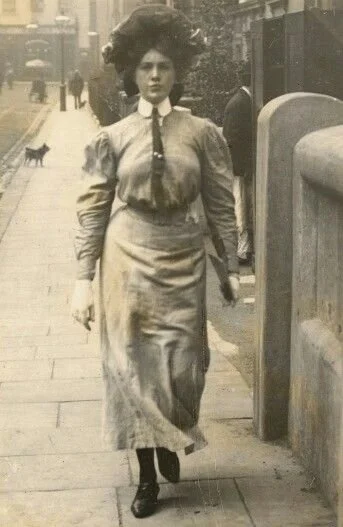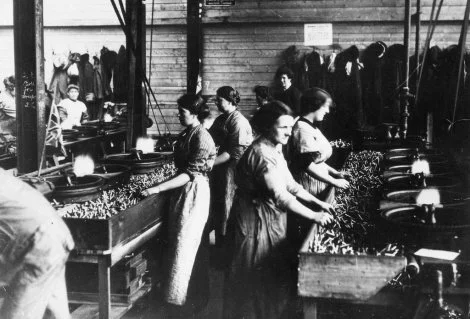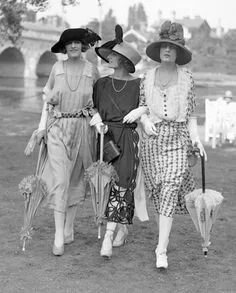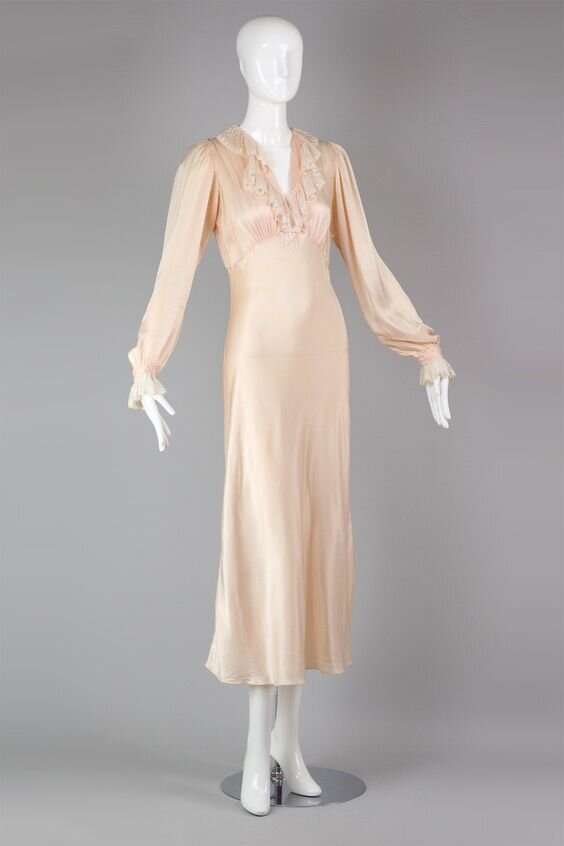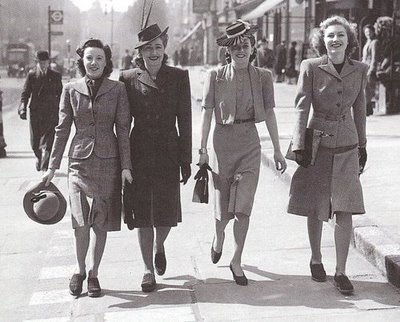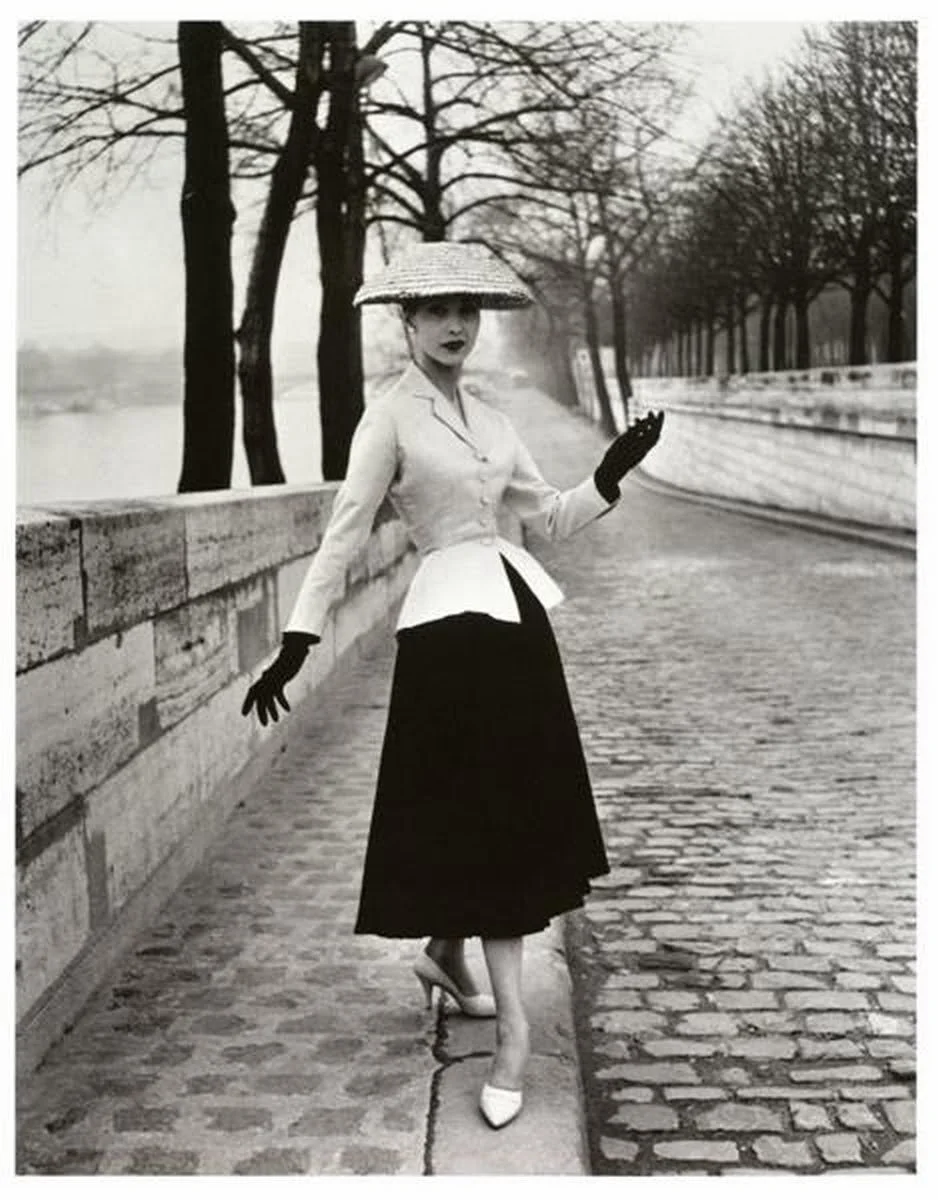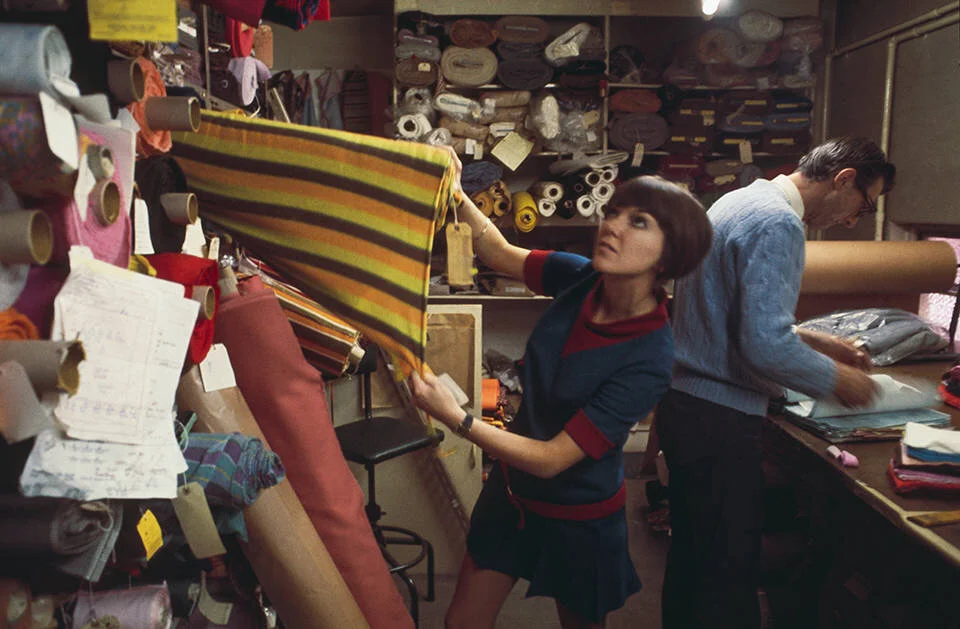20th Century Fashion - A Timeline
Over the course of the 20th century fashion evolved from modest and restrictive, to free from boundaries and eclectic, and it did so in magical ways. From the 1910s right through to the 1990s, fashions of the 20th century are all so different but they all have a common link - politics. So let's take a look at how each decade of the 1900s changed clothing and the people wearing them.
1900s
With the death of the long reigning Queen Victoria in 1901 the Edwardian era began, and fashion largely remained similar to that of the previous decade until the ideal Gibson girl style emerged. The Edwardian S Bend corset was hugely popular and created a silhouette which pushed the bust forward and the hips back, emphasising a smaller waist and a pigeon-like breast. Modesty was as important as ever, and dresses continued to cover the arms and covering the neck also came into fashion.
Camille Clifford, actress and famous Gibson Girl
Evening dresses followed the same silhouette, but were often more elaborate and less modest, with wider necklines and arms often being on show. It has been a common practice throughout history for evening gowns to be more risque than day dresses. Of course, these elaborate day and evening gowns were only worn by the wealthy elite and the working class wore slightly different styles. While modesty was still important, working class ladies began to wear tailor-made suits allowing women to change blouses and skirts which was of course far more affordable. These suits were also less physically restrictive and allowed for these women to go about their day at work.
Photograph of a working class woman, circa 1905
As the decade progressed the fashionable silhouette began to soften, and the rigid S bend corset began to fall out of favour, allowing for a more natural shape. Waistlines began to rise and a straighter, tubular silhouette came into fashion.
1910s
The fashions of the 1910s were changed by something drastic, the First World War. In the beginning of the decade corsets were still commonplace and the overall silhouette, while still softer than the previous decade, retained some rigidity. Necklines were lower in daytime wear and waistlines rose even further. But when war broke out in 1914 this all began to change, and it did so drastically.
Women munition workers during the First World War. Credit: TUC collections, London Metropolitan Museum
Simpler, utilitarian styles became popular and plain tunics worn over skirts were fashionable. As women began to take over the jobs of men who were away at war, corsets were worn less and less until they pretty much disappeared, being replaced with girdles. Women also began to wear uniforms that included overalls and trousers, things that were strictly menswear in prior decades. After the war ended in 1918 styles remained simple, and the tubular shape developed further eventually turning into the flapper dresses of the next decade.
1920s
With the world still trying to recover from the damages of the First World War, the beginning of the 1920s saw fashions remain simple and the use of more economically friendly fabrics stayed the standard. The flapper dress with its dropped waistline and rising hemline began to be commonplace and was helped to popularity by Coco Chanel.
Ladies at Royal Ascot 1921 credit: Boston College Library
Evening dresses became popular again, and while they often followed the same shape as day wear flapper dresses they tended to have more ornate decorations made of beadwork and embroidery. Unlike previous decades where fashions tended to have one set trend, the 20s saw several trends at once. Alongside the androgynous flapper style was the Robe De Style, popularised by Jeanne Lanvin, which had longer and fuller skirts, which were often worn with panniers and tended to be more romantic and feminine in style.
Winter 1926/7 Jeanne Lanvin dress. credit: antiquedress.com
As the decade drew to a close hemlines began to slowly drop once more, however nowhere near that of the first decade of the 20th century.
1930s
As the 1930s began, the boyish silhouette of the 1920s evolved into a more soft feminine style that gently hugged ladies’ curves. With the birth of Hollywood, women began looking at Hollywood stars for fashion inspiration and stars like Garbo and Dietrich became fashion icons! The bias cut, where you cut fabric at a 45 degree angle, grew to popularity helping to mold dresses to the wearer in a sleek and stylish manner.
1930s bias cut silk charmeuse night gown credit: thevintagenet.com
Evening gowns of bias cut silk with low backs were also incredibly popular and could be seen on many Hollywood stars. Day dresses had a clearly defined waist and fell around the mid calf, smart suits were also popular and featured crisp lines. The line between womenswear and menswear was truly starting to merge. By the end of the decade the world had slipped into yet another World War and the nipped in waists and broad, padded shoulders of the 1940s were already taking over.
1940s
With the world at war, fashion took a back seat and with women working more than ever for their countries, military uniform was worn the majority of the time. Fabric was rationed and so clothing was made from the simplest of fabrics in the simplest of patterns. Paris had always been at the epicentre of fashion, but as Germany occupied France this changed and each country went in different directions when it came to fashion.
40s women in suits. credit: thevintagedancer.com
Utility clothing became the norm, and could be bought with rationed coupons. In the UK popular fashion designers like Norman Hartnell were bought in to design these utility garments, which helped them gain traction as fashionable and trendy items of clothing. While clothes rationing was severe in the UK, in the US it was less so and fashions were more diverse. By the end of the war, France wanted to rebrand itself as the fashion capital and with the aid of Christian Dior, it did just that.
The New Look, 1947
Dior showcased the ‘New Look’ in February 1947, and it didn't exactly go down a storm. It seemed extravagant and over the top, something that the postwar world was not yet ready for. People still had to use every scrap of fabric they could get due to rationing and the large skirts of the New Look threw this out the window. However, despite all its complaints the New Look started to become more popular as the 40s drew to a close, and it would become the blueprint of the 50s.
1950s
The first half of the 1950s saw elegance at the forefront of fashion ideals, with Dior's New Look being all the rage. Day wear had a sense of formality, with hats and gloves continuing to be worn outside the house. Fun and quirky patterns were also commonplace, showing playfulness that was lost in the 1940s due to the War. Although the New Look with large skirts and nipped in waist was popular, there was also a trend for wearing narrower, pencil skirts. These were often worn in matching suit sets.
Example of a 1954 strapless cocktail dress
The 1950s also saw the arrival of the cocktail dress. A dress that sat in between daywear and evening wear, formal yet not over the top. As the decade progressed, the style of less form fitting and structured silhouettes developed further and clothing became straighter in its cut.
1960s
The 1960s saw fashion evolve far more broadly than in previous decades, with many styles and trends being followed. Elegance was still important for many, with Jackie Kennedy pushing this style. The swinging styles of London bought more risque, youthful and fun outfits. And by the late 60s, Eastern influences bought the hippie craze which would carry through to the 1970s. Jackie Kennedy's glamorous and elegant style featured matching skirt suit sets, accessorised with pillbox hats and coordinating jewellery. Her looks were lady-like and luxurious, a style many seeked to replicate.
Jackie Kennedy wearing a red wool suit, 1961
However, this desire didn't last long and the styles of the cultural phenomenon that was Swinging London began to take the world by storm. Designers like Mary Quant created styles full of colour and new more risque silhouettes were emerging. Short, a-line skirts, minidresses and chunky boots were a common look. The rise of the Beatles also helped to circulate these new, youthful styles.
Mary Quant selecting fabric 1967 credit: getty images
The younger generation of the 60s had more disposable income than their predecessors and so fashion became more disposable too, this would eventually become modern day fast fashion. By the very end of the decade the hippie aesthetic had emerged, and maxi dresses, kaftans and flowing skirts were fashionable. Designers took inspirations from the Eastern world when choosing their fabrics and patterns too.
1970s
With the dawn of the 1970s, ready-to-wear fashion was readily available and boutique stores were all the rage, and as technology developed synthetic fabrics were being used more than ever before. The hippie style of the late 1960s continued in the early half of the 1970s, and followed alongside the general hippie movement putting love and peace (and drugs!) first. These styles favoured handmade items, and crochet, knitting and dying were utilised. Designers of the 1970s also looked to the past for fashion inspiration, taking ideas from the late Victorian and early Edwardian periods. High necks and flouncy blouses were common once more, for the first time in 60 years!
1978 maxi dresses credit: thevintagedancer.com
The 1930s and 40s were also regularly used as inspiration, although for some who had been witness to World War 2 these were not welcome sights as to them these styles had negative connotations. With the birth of disco fever, evening wear of the 70s featured sequins and sparkles and of course, hot pants. As the female sexual liberation movement continued in the 70s, clothing became less gender specific, with celebrities like Bianca Jagger starting to wear menswear. The wrap dress was also seen as revolutionary yet controversial. It’s ability to be taken off swiftly and put back on just as quickly was seen as promiscuous by some.
1980s
When we think 1980s fashion we think big, over the top and generally ridiculous. Women worked more than ever and this bought the power suit to play. Big shoulder pads, not seen since the 40s, returned and womenswear and menswear began to merge even further. For perhaps the first time it was acceptable for women to be ambitious to climb the ladder of wealth, to be big in business and achieve personal fulfillment. This was reflected in their clothing. Evening wear of the 80s was glamorous and shows like Dynasty perpetuated the trend for bedazzled and bejeweled gowns.
Cast of Dynasty credit: ABC Inc/Everett/Rex Features
In stark contrast to the rest of the century, the 80s saw colourful makeup and messy permed hair. The youth had their own very distinctive style, with fitness and athleisure wear being at the forefront. The tracksuit was worn by many even when not exercising, and the sweatband was trendy. Think of Jane Fonda in a neon high leg leotard and leg warmers, this was the height of youth fashion!
1990s
The 1990s saw the birth of the supermodel, with stars such as Kate Moss and Cindy Crawford being the face of pretty much every brand's campaign. The desired figure was tall and lean and this was seen all over the catwalk, and fashion was designed to mold to this body shape with many designers taking inspiration from the bias cut silk gowns of the 30s. The 90s also saw the emergence of hip hop, and as underground African American culture began to cross over into mainstream media their fashions came too. Labels such as Fubu used rap artists like Tupac Shakur to bring their oversized silhouette into the limelight.
The cast of The Fresh Prince of Bel Air credit: NBC/Getty Images
Goth culture began to spread in the 90s, fuelled by shops like Hot Topic. Black on black, ripped tights, leather and latex were popular. As politics became more accepting and the gay rights movement exploded, fashion became more diverse. There was no longer one specific style or trend that defined a decade. There were hundreds of sub cultures that influenced fashion and pathed the way for the thousands of different fashion styles that live in mainstream life today.
The 20th century truly saw the greatest changes in fashion, from corsets and petticoats to leather miniskirts, this century was full of change and diversity. No decade was the same and each had its own influences. I’m not sure any century will see such a change in fashion ever again.

